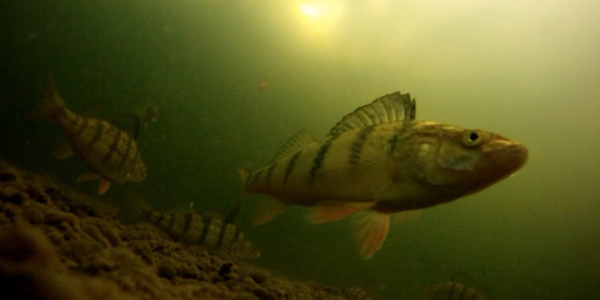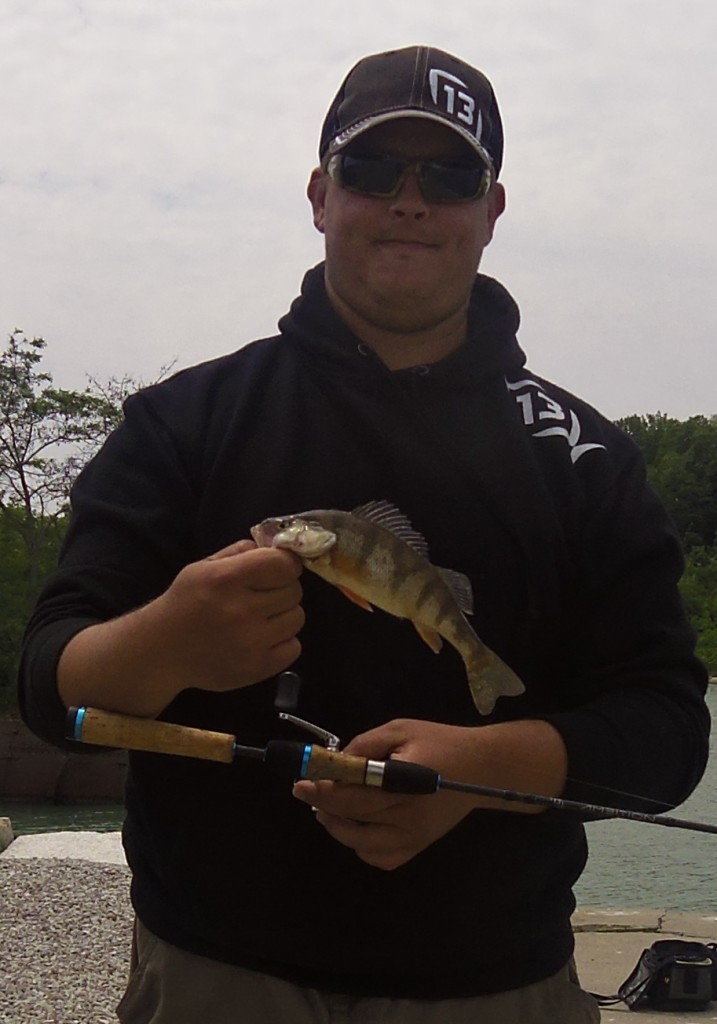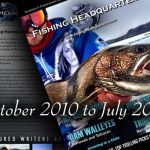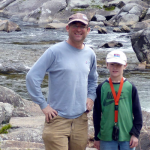Over that last ten years there has been a growing trend when it comes to fishing for Lake Michigan perch. With their populations depleting and not at the same levels they once were, catching perch is becoming more difficult annually. I hear time and time again, “There aren’t any perch left in Lake Michigan!” especially from shore fishermen. Reason for this is failure to adapt to changing conditions. In this article, I will be focusing how and when to target Lake Michigan perch from shore, and in the boat. Just like targeting any other species, everything evolves and so should you as an angler.
When
This year (2015) in Wisconsin, Lake Michigan perch season opened on June 16, and will run through April 30th of the following year. Some people think this is a very long season but in all reality it’s a lot shorter than perceived. Once perch conclude spawning (typically in May), they will stick around the spawning grounds depending on water temperatures and available food. I begin following the wind direction a week before the perch season opens, and I use that as a gauge to determine whether or not I’ll have a good opening morning.
The best water temperature I have found that will hold perch is around 60 degrees, but a week of west or east winds will dictate where I target perch opening morning. If you don’t have a thermometer and you want to know what the water temperature is, there is one easy way of finding out. Go to your nearest marina/harbor and ask any charter captain or any boat that is coming in. As the summer turns to fall, perch will migrate outward to deeper water making them extremely difficult to find and catch. But in the winter perch can be found especially in Milwaukee Harbor and targeted until season closes.
Boat Tactics
In the Milwaukee/Racine/Kenosha, WI area there is no shortage of spots to anchor up and jig or cast for perch. Areas to look for are around break walls with large rocks, as perch like to hide amongst the openings of rocks to avoid predators. Discharges from power plants and water filtration plants are other good spots to try, especially if a few days of strong west winds move in and the water temperature drops below 60 degrees. Perch will stack up in the warm water of the discharge and feed on the bait and zooplankton in the area. The key to success is being able to present a number of different baits until you find what they are looking for.
![10313554_10154278017785284_1767395309357505337_n[1]](http://www.fishing-headquarters.com/wp-content/uploads/2015/07/10313554_10154278017785284_1767395309357505337_n1.jpg) When I’m fishing an area off of the Oak Creek Water Treatment Plant, also known as the “boils”, I like to start with the most simple of presentations; a fathead minnow and large sinker to get down to the bottom in 25 feet of water. I will use one rod with this set up and let it lie on the bottom while I vertical jig a second minnow and sinker rod. If I don’t get bit within 30 minutes I will switch over to a variety of jigs and plastic tails.
When I’m fishing an area off of the Oak Creek Water Treatment Plant, also known as the “boils”, I like to start with the most simple of presentations; a fathead minnow and large sinker to get down to the bottom in 25 feet of water. I will use one rod with this set up and let it lie on the bottom while I vertical jig a second minnow and sinker rod. If I don’t get bit within 30 minutes I will switch over to a variety of jigs and plastic tails.
As minute as it may seem, the color of you hook can lead you to a full limit or being skunked. That’s why I will run one rod with a small size 8-10 gold hook and the other one with a size 8-10 red hook. When perch are extremely finicky I’ll pull out my ice fishing jig box and use Northland Impulse jigs and VMC tubby jigs. If perch are on an active feed or want a larger presentation I’ll switch over to a ¼-1/2oz Kastmaster or Krocodile spoon and snap jig them off the bottom with a 7’ medium action 13 Fishing Omen Black spinning rod spooled with Power Pro and a 6lb fluorocarbon leader. Braided line such as Power Pro is used for keeping constant contact with my spoon, and it is a lot easier to detect the slightest bite.
When I’m targeting breakwalls with large boulders I like to use the slip bobber and minnow presentation. It gives me more control of my depth to avoid getting hung up on rocks and other snags. When using live minnows, don’t be afraid to go big with medium and large shiners. I have caught jumbo perch while soaking 4-5’’ alewives on the bottom for salmon. Another tactic I’ll share with you is trolling Berkley Flicker Shads. Depending on the depth of water, you might be able to get deep enough with a 1/2oz snap weight on a mono trolling rod (similar to trolling for walleyes) for deeper water try experimenting with lead core and planner boards. Just like any other species, everything keeps evolving and your tactics should too. Try thinking outside of the box and using something no one else has tried before.
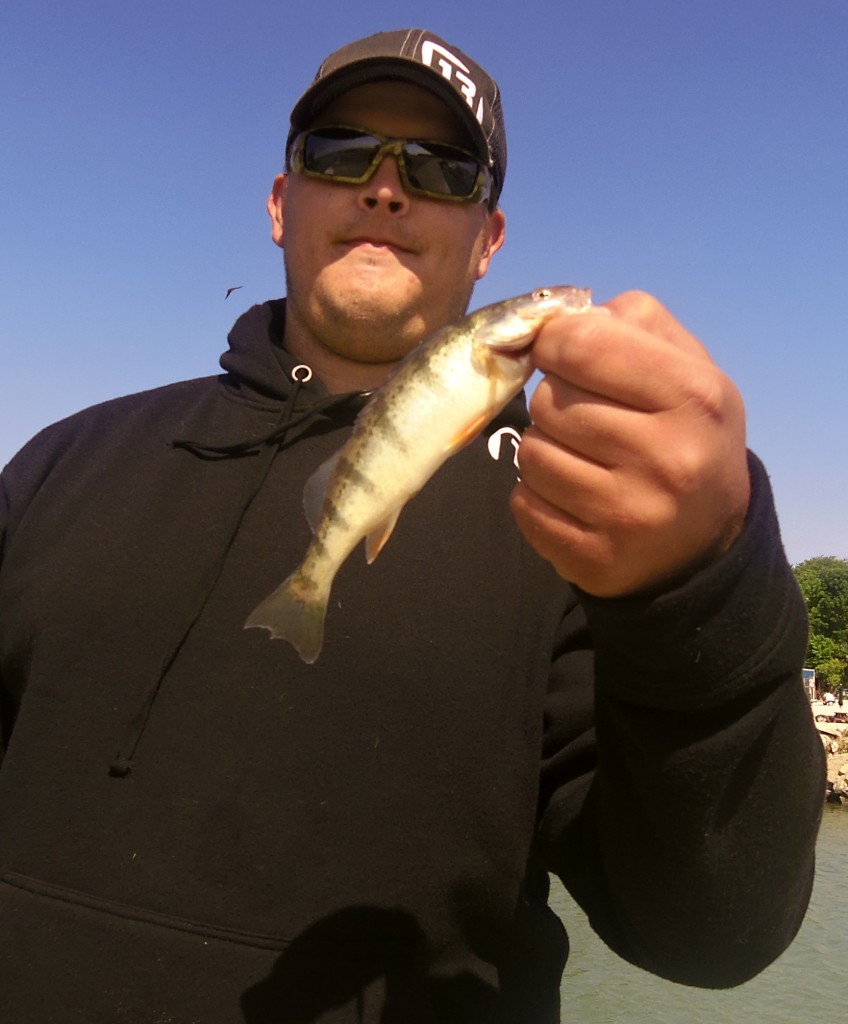
According to Hyvonen, shore fishing is at its best depending upon ideal water temperatures and wind direction.
Shore Tactics
When fishing from shore, paying attention to the wind direction and water temperature is paramount to having a better success rate. I typically hear the most complaints after a hard west wind. The reason for this is the water temperature dropped from the mid 60’s to a freezing 50 degrees and all of the bait moved out to warmer water and so did the perch. Unlike years past, today’s perch population has become more dependant on alewives for food and will follow this forage species similar to salmon. Years ago you could find perch near shore, almost year round, because the main food source was crawfish…. hence why fishermen using crab tails would do very well
In the areas I target perch there is a trend when it comes to what I use from opening day until the end of July. Once season opens and the water is still a little cold, jigs and plastic wedges, and fathead minnows under a slip bobber, will catch the majority of my fish. As the season progresses and the water temperature increases, so does the perch activity. The plastic and fathead minnow bite will start slowing down and that is the time I will switch over to casting Flicker Shad and Kastmasters. If I’m getting smaller perch on the Flicker Shad I will set out what shore anglers call a “bottle rig.” This consists of a ¼-1/2oz bell sinker with a split shot stopper close to 1 foot away from the hook and with a medium shiner hooked through the lips and let the rig sit on the bottom with your line wrapped around a bottle with your bale open so when a fish takes the bait it knocks the bottle over and pulls line out so you don’t have to worry about losing your rod and reel. This technique is extremely effective when jumbo perch don’t want to come off the bottom.
Time of day and final thoughts
Whether you’re in a boat or fishing from shore, time of day is another factor you should consider. Depending on the day and area you’re fishing, you might only have a 15 to 20 minute window of non-stop action and once that window closes you’ll have to really work harder for your catch. Keeping a log of where you were, time of day, and what you caught is a very good idea. You will be able to observe a pattern after doing this for a few years.
I can tell you from personal experience when the perch are in Kenosha you better be there an hour before sun up with glow in the dark plastics. If you show up to the harbor once the sun comes up you’ll be wasting your time. With declining perch populations don’t expect to go out and catch a limit every day. With that mentality you will become extremely frustrated and discouraged. Hit the water knowing you might only catch one or two quality fish, but use that time to experiment with different presentations.
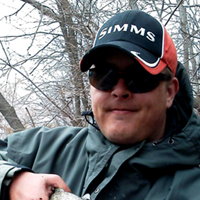 Tim Hyvonen
Tim Hyvonen
Tim Hyvonen is the owner of WiFinlander Guide Service in Oak Creek, Wisconsin. He has been targeting steelhead for the past 20 years and has been a licensed Wisconsin fishing guide for 5 years. Tim has been featured on Outdoor Wisconsin and in the Milwaukee Journal Sentinel. Tim is also a GORE-TEX fishing tech and a Fishhound.com Pro staffer. For any questions regarding this article or Great Lakes fishing feel free to email him at
Wifinlander@aol.com or visit his Facebook page at: www.facebook.com/WiFinlanderGuideService


